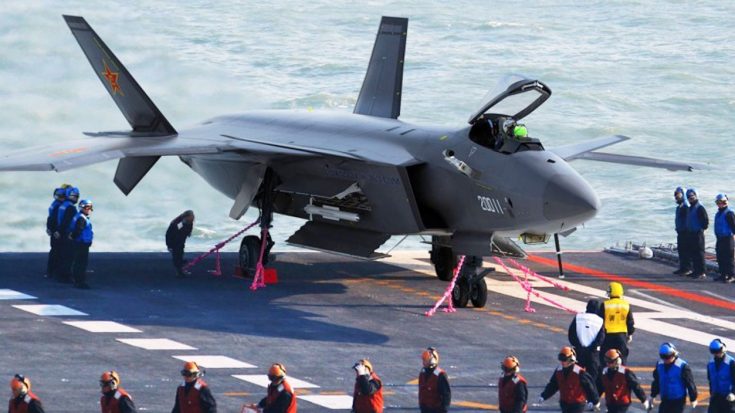[Watch] Why Does US Spy Plane Need To Be Pursued By Car During Landing? | Loungtastic
U-2 pilots wear space suits that restrict their peripheral vision. And when you combine that with an already difficult to land aircraft, the altitude callouts they get from chase cars help them touch down safely.
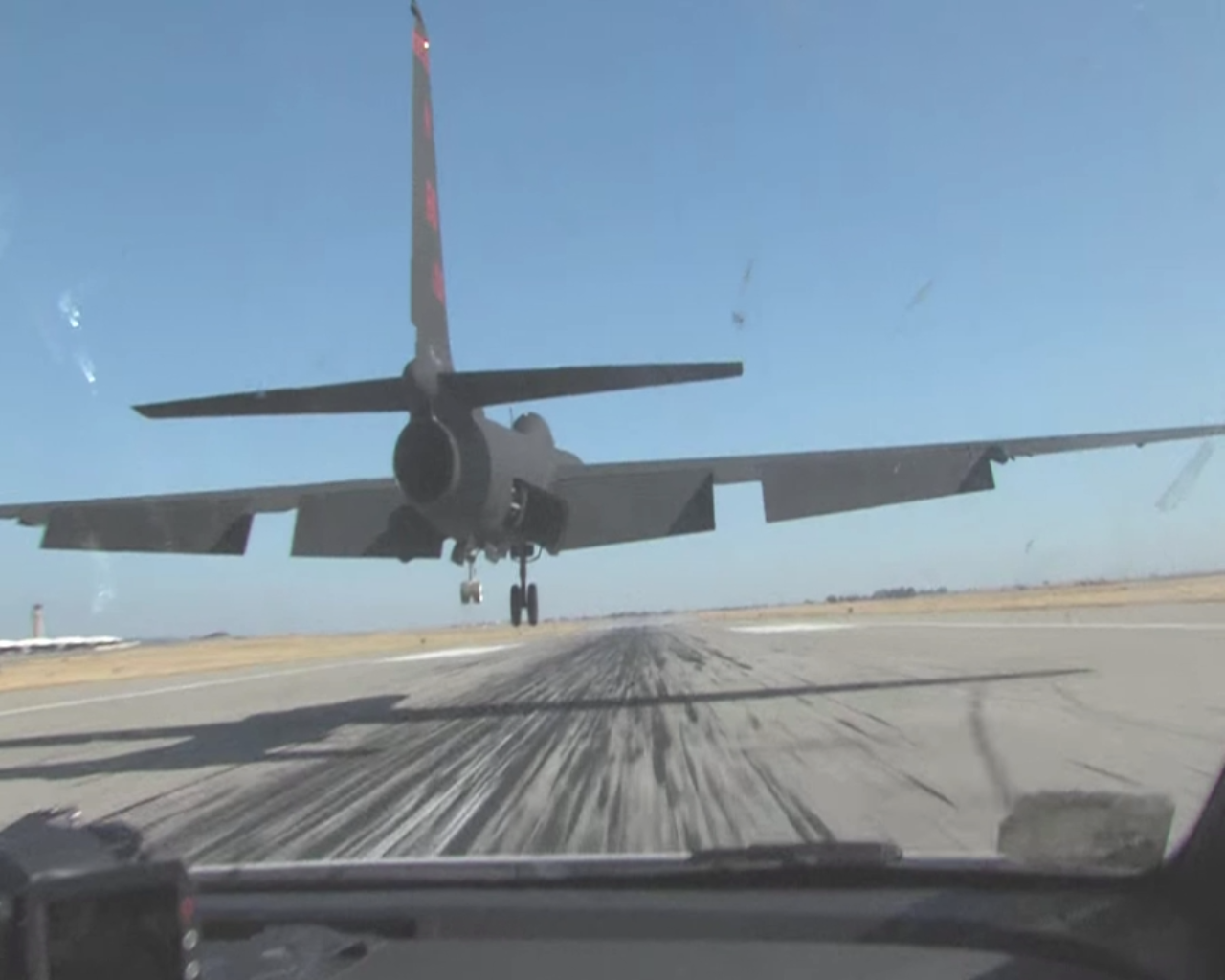
The people in this video got a little more than they bargained for when lighting off these fireworks! Let the failing begin!

It’s very easy to want to go a little crazy with fireworks, but as seen in the video, fireworks are no joke and should be handled very carefully.
Please don’t try anyone of this craziness at home and remember to always use caution when using fireworks.
A WOMAN was marched off a Jet2 plane in a hijack scare when she allegedly "rushed the cockpit" and threatened to kill passengers.
Two RAF Typhoon fighters were scrambled to intercept the Airbus 321 - creating a sonic boom heard 40 miles away in their race to escort the plane back to Stansted Airport
Our exclusive video below shows the "intoxicated" woman being pinned to a seat by six cabin crew and passengers, then being led away by cops amid the mid-air panic. Police said a 25-year-old woman from from Maidenhead in Berkshire was arrested on suspicion of common assault, criminal damage and endangering an aircraft. She has since been released on bail.
Terrified passengers said a woman in her 20s tried to "rush the cockpit" 45 minutes into the flight from Stansted to Dalaman, Turkey.
Amy Varol, who was two rows behind, said: "This lady who was clearly intoxicated gets called to the front of the plane and she starts shouting and screaming and runs to the plane door. "The cabin crew grabbed her to stop her and then she starts scratching them and hitting them. "She then got pinned to the floor by cabin crew and passengers and a passenger even sat on her." She said: "She kept getting up and running back towards the door. "She had six people sitting on her. We had to fly back to Stansted for the police to get her. "She kept singing songs and screaming she’s gonna kill us, 'I want to get off', 'I’m gonna f****** hit you' 'f***** come on then'. "I was terrified. There’s nothing you can do, you can’t escape." Stewart Brown, who was six rows behind, said a woman in her early 20s started to irritate passengers as soon as they took off. The 36-year-old mobile DJ: "The air stewards did their best to calm her down. "She seemed absolutely fine before takeoff but then strangely very drunk or drugged as we took off. "The stewards gave her several chances and did the best they could before she became abusive and then made a dash for the cockpit and had to be restrained by staff and passengers. "We had to turn round and police removed her off the plane." A Jet2 spokesman said: “We are aware of an incident regarding an extremely disruptive passenger on a flight from Stansted to Dalaman earlier this evening. "The aircraft has returned safely and we are liaising with the relevant authorities to support their investigation. "We are working hard to ensure the remaining customers reach their destination as soon possible."SONIC BOOM
Many people living near Stansted phoned police to report a loud noise they though could be an explosion. One man described the noise as a "huge bang" which "nearly blew my window out". Twitter users said their windows rattled and tellys shook as far away as Chelmsford 18 miles away and even Ilford in East London, around 40 miles from the airport. Police in Bishop's Stortford, Hertfordshire, tweeted: "Large number of 999 calls coming in about a loud explosion. "We have liaised with @EssexPoliceUK who are confirming that this is a sonic boom from a passing aircraft." A sonic boom is created when supersonic aircraft accelerate through the sound barrier - which is banned over land except in emergencies. A Royal Air Force spokeswoman said: “We can confirm that RAF quick reaction alert Typhoon aircraft from RAF Coningsby scrambled to escort a commercial flight into Standard shortly after take-off due to reports of a disruptive passenger.” Essex Police said: "A woman arrested at Stansted Airport over the weekend has since been released on bail. "The 25-year-old, from Maidenhead in Berkshire, was arrested on suspicion of common assault, criminal damage and endangering an aircraft.Talk About "Oops!"
A group of pilots set out to break a Guinness World Record. They were to fly in a tight formation under the Chain Bridge in Budapest. Although they succeeded, the attempt almost ended in disaster. Almost being the operative word.
The stunt was being performed in May over the Dunabe River. Organized by Red Bull, this day was full of exciting events. From a full-sized airliner flying mere feet from over the top of the bridge to F-1 race cars showing off what they can do on the streets, people were plenty entertained. Until this happened.
The trio (all professional pilots of course) that was supposed to break the world record first gave the crowd a spectacular air show display. From formation loops to barrel rolls, they gave people some pretty amazing things to look at before they really turned things up.
As a finale, they were to fly in tight formation under the bridge, which they did. The problem was that one of them hit the water surface.
You folks are aviation fanatics. You know what that should have led to. But it didn’t.
The pilot recovered after skidding over the water, getting a nasty wobble after he gained altitude again. All in all, although it looked like a bad day, everything was good. They broke the world record and all three of them landed safely.
Like they say. Any landing you can walk away from is a good one. If you can use the same plane the next time, ever better.
The Most Tricked Out Private Jumbos
The opulent dining rooms, kitchens and lounges of the types of Boeing 787 and Airbus A350 planes sold to private buyers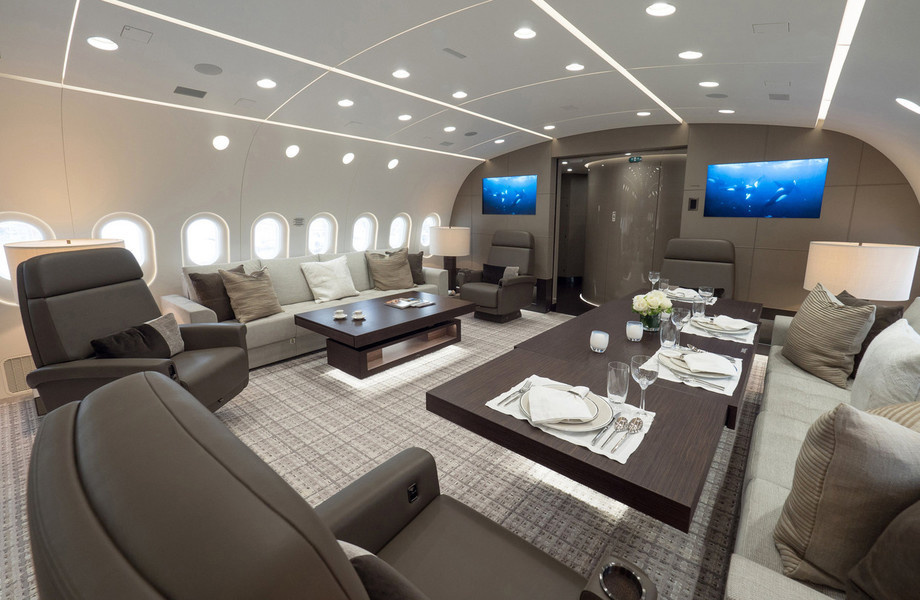
The dining room with a sitting area onboard a private 787 scheduled to be delivered to a Chinese buyer at the end of this week. Private widebodies get plush, durable carpet that can cost $200 a square foot and the latest communications technology.
The Boeing 787 and the Airbus A350 can fly nonstop between just about any two cities in the world. They can each hold 300 passengers. Or a family of four.
In the rarest air of wealth, jumbo jets are being outfitted as private planes.
They cost $300 million or more.
A Boeing 787 outfitted by Kestrel Aviation Management is scheduled to be delivered this week to a Chinese company, HNA Aviation Group, that plans to use it for its CEO and for VIP charter trips. The tricked-out jet was put on display at an aviation conference this year and pictures of its interior were made public—something unheard of in the world of ultra-fancy, ultra-secretive private-jet buyers.
A peek inside is more than just airplane voyeurism. Sometimes innovations in private jets make it into the commercial airline fleet, such as new communications equipment or wing tips that increase range and fuel economy. Private buyers are demanding, and manufacturers can experiment when they are outfitting one plane rather than a fleet.
Kestrel chief executive Stephen Vella says new materials and lightweight construction techniques pioneered on private planes often get adopted in fancy first class airline cabins.
We are the only part of the company that sells aircraft to passengers,’’ says David Longridge, president of Boeing Business Jets.

The biggest selling point of the 787 and A350 is the range—10,000 miles or more depending on weight and fuel capacity of the plane. That means they can fly from Asia to the U.S. East Coast and from the Middle East to the West Coast without stopping for fuel.
They don’t like to stop,” Mr. Vella says of his clients.
The private 787 Mr. Vella was hired to sell took two years to design and outfit. Mr. Vella says he went all-out, even buying two tons of marble that a contractor sliced into very thin pieces that were mounted on lightweight structures with a flexible membrane in between so they wouldn’t crack in turbulence.
The plane was recently bought by HNA, a transportation company and parent of several airlines, including China’s Hainan Airlines.
It was Mr. Vella’s 11th widebody project, but “for the first time in my career I’ve been able to show [the public] what type of work we do,” he says. Mr. Vella took an empty shell of an airplane from Boeing and worked with a French design firm to create a cabin that would be distinctive enough for a billionaire buyer but plain enough to accommodate the aesthetics of clients from both the Middle East and Asia, the regions where most private jumbo buyers come from. The plane was turned over to Greenpoint Technologies, a Kirkland, Wash., firm that specializes in building aircraft interiors and retrofitting airliners, for more than a year of construction on the interior.
Boeing has sold 15 787s, which carry about 220 to 300 passengers for airlines, in recent years to private buyers, most of them individuals, Mr. Longridge says. In the past, its biggest offering for most nongovernment buyers used to be the single-aisle 737, which seats about 150 people for airlines.
The world has moved on and has moved up and people are flying bigger airplanes,” he says.
At 2,408 square feet, a private 787-8 cabin has homey comfort on a 17-hour flight for a staff of 40 or just a billionaire’s family. The plane is usually fitted with a living room, dining room and den. Showers as big as those in five-star hotels have flow rates of 2.2 gallons a minute, which is close to the U.S. federal standard for new shower heads. Gourmet kitchens have induction cooktops, since flames aren’t allowed, plus steam convection ovens, chillers, freezers, espresso makers and rice cookers.
Master bedrooms have a “gust belt”—a giant seat belt covering the mattress—plus oxygen masks scattered in the ceiling. Furniture is constructed with thin slices of wood, metal or marble covering lightweight honeycomb material to look real but save weight.

Greenpoint, one of the largest outfitters of big private airliners, has one client’s 777 in its hangar, along with a new private 787.
Greenpoint executive vice president Bret Neely says a widebody offers three times the space inside the plane, but operating costs aren’t three times as large.
The luxury is really amazing. If you’ve been in a really, really high-end hotel, that starts to get at what it’s like in one of these master suites,” Mr. Neely says. “The 787 and A350 are the future of VIP.
Building all that fancy into an airplane turns out to be a difficult engineering challenge, and not just because everything needs to be lightweight. Most everything on board has to be bolted down and capable of withstanding extreme forces. Private jets must meet FAA requirements and prove the interior isn’t going to come apart should the cabin suddenly decompress or crash land.

A bed has to withstand an event with nine times the normal force of gravity, Mr. Neely says, and meet flammability requirements.
Tables may have head-strike pads to make surfaces less lethal in accidents. Candleholders can’t have candles—Evergreen has a local glass artist fabricate candle holders with a hole in the bottom where an LED light is placed.
Some private jumbos have guest bedrooms, offices, staff seating, even rooms for providing medical treatment, hospital beds and all. Some have missile defenses installed—not nearly as elaborate as military defenses installed on the Boeing 747s used as Air Force One, but commercially available systems that use radar to detect missiles and deploy flares as countermeasures. The planes also have a full range of security systems, such as alarms if cargo doors are opened on the ground, motion sensors and cameras. Some carry private gun lockers and almost all carry at least one, if not two, safes for cash and jewelry. Cargo bays have room to carry spare parts like extra wheels.
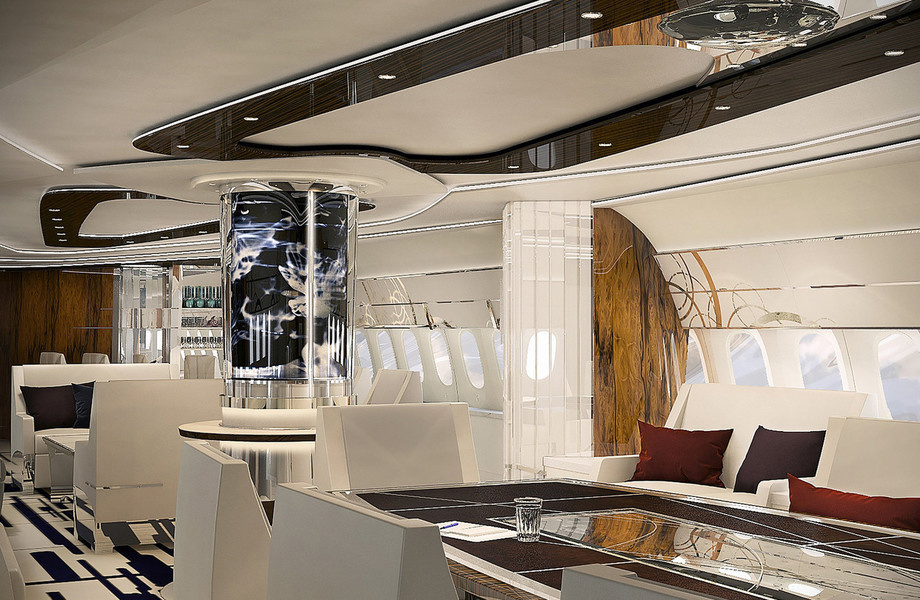
Crystal Cruise Lines just put a Boeing 777 into Greenpoint’s hangar in Moses Lake, Wash., to be turned into a flying cruise ship. The plane, with 3,000 square feet of space, will have a bar, lounge and gambling table, plus 84 first-class seats instead of close to 400 airline seats. A round-the-world trip with stops at hotels in several cities would take 14 to 28 days by plane. Its maiden voyage is scheduled for 2017.
The well-traveled leisure market is looking for new things,” says Richard Ziskind, vice president and managing director of Crystal Luxury Air and Crystal AirCruises.
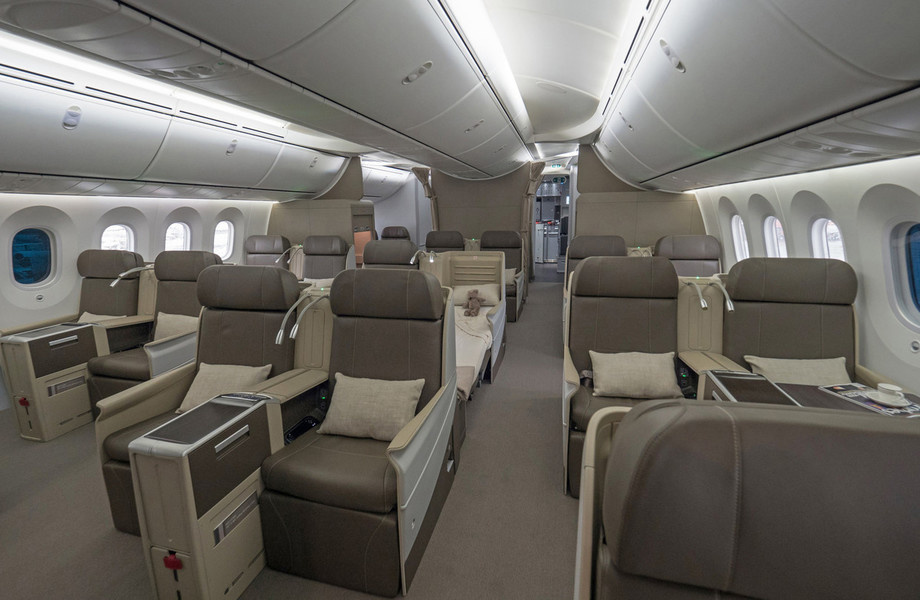
Crystal, which operates ocean liners, riverboats and yachts, sees its plane as a natural extension. With a water cruise, 80% of the experience is on the ship. With an air cruise, 20% will be in the air and the rest on land excursions. The plane may be available for charter, Crystal says, depending on its tour schedule of around-the-world trips.

Several firms already offer luxury air trips with specially outfitted private planes, such as narrowbody 757s fitted with 50 or 75 seats instead of 180. Those trips often cost $80,000 or more.
Teacher Punished For Giving Oral Sex To Students

If this woman, Jill Meldrum-Jones, looks to you like she's feeling terrified, that could well be the case. She admitted to doing something completely wrong and inexusable on an airplane (and other places), lost her teaching career and faces jail time because of what she did.
You would think a married teaching assistant and mother of two living and working in England would enjoy a chance to chaperone and be part of a four-day school trip to South Africa just for the break, wouldn't you?
Wouldn't you expect that a 37-year-old teaching assistant, who is also a wife and mother, would teach the kids about South Africa since that's where the class was going?
But instead, Meldrum-Jones went where she shouldn't have ever gone at all...
On the airplane full of students, Jill Meldrum-Jones sexually molested a 15-year-old student of hers by masturbating him and giving him oral sex during the flight home to England from South Africa. She actually admitted to doing those two acts three times each during the 10 hour flight "under the cover of darkness."
Even worse, this wasn't the first time Meldrum-Jones had performed sex acts on this child. She told the court there were several other occasions she engaged in sexual acts with this student during this school trip. The teaching assistant admitted that the first time she performed a sex act on the child was on a mini-bus on the way back from a day-long excursion. In addition to the charges of child molestation, Meldrum-Jones pled guilty to two counts of inciting a child to engage in sexual activity which involved him performing oral sex on her.
After the South Africa school trip, rumors about something going on with the teaching assistant and student were circulating and the two were often seen going for walks together. The school can't be named to protect the child. Under questioning by authorities, Meldrum-Jones admitted what she'd done before pleading guilty in court.
Jill Meldrum-Jones was given a jail sentence of two years, eight months.
She has been added to the sex-offender registry list.
The Serbs didn't know that, however, which is why they were able to shoot one down in 1999 ~ reputedly the only time such a plane had ever been destroyed. It all began in 1999. The Federal Republic of Yugoslavia (FRY) had been fragmenting as various ethnic groups tried to carve out separate states for themselves. Among these were the Serbs who didn't want Albanians sharing their slice of the pie. This resulted in the former expelling and attacking the latter.
The North Atlantic Treaty Organization (NATO) ordered it to stop, but Yugoslavia told them where to stick it ~ never a good idea. So NATO asked the United Nations (UN) for permission to intervene, but Russia and China said "no way." That didn't stop the press from bombarding the world with pictures of dead and fleeing Albanians. President Bill Clinton reacted by comparing the situation to the Holocaust. NATO, therefore, told the UN where to shove it (a first) and launched airstrikes against Yugoslavia. Called Operation Noble Anvil, it lasted from March 24th to June 10th, 1999. To make a long story short, Yugoslavia became extinct, and the independent country of Serbia was eventually born. But that's getting ahead of ourselves, so let's backtrack. Among those who participated in the bombing spree was Lieutenant Colonel Dale Zelko. A veteran of Operation Desert Storm in Iraq, he had already flown three sorties over Yugoslavia when his life changed with the fourth. It happened on the evening of March 27th, 1999. Zelko was to take out several targets within and around the city of Belgrade. Previous sorties had failed because the targets were protected by sophisticated Russian Integrated Air Defense Systems (IADS). He was to fly as part of a larger sortie, but the weather turned foul, forcing other planes to stay grounded. This made him uneasy, but since he'd be flying a state-of-the-art F-117, they gave him the green light. No F-117 had been downed since their first operational flight in 1983, after all, so why worry? Besides, NATO knew that while the Yugoslavs had an effective Integrated Air Defense System, they were still using radars that were equally state-of-the-art~ back in the 50s and 60s. And F-117s were invisible. Well, not to the naked eye, admittedly, but to radar. Their shape scattered radar waves, while their material absorbed the rest, making them extremely tricky to detect on screens. As such, they're not officially "invisible." They instead use of "low-observable technology." They do have one major weakness, however. Every time the pilot opens the wheel well or bomb bay doors, their low-observability rate decreases. Or so the Americans thought till much later. Fortunately for the desperate Serbs, they figured it all out much earlier. Without getting too technical, the F-117's shape and material work well against modern, short wavelength radars ~ "short" being shorter than the object they're trying to detect. Imagine throwing pebbles in the dark to find something by listening for the thud. But when it comes to the primitive long wavelength radars that the Serbs used... it's like prodding for something in the dark using a long stick. Once you find it, it doesn't really matter if your stick slides off, now does it? So the Serbs extended their wavelengths to make the "stick" even longer. Goodbye, invisibility cloak! As an added bonus, they were able to intercept and decipher NATO communications, so they had a good idea of when and where to expect their unwelcome guest. Zelko couldn't have known that, of course. But Colonel Zoltan Dani did. Commander of the 3rd Battalion of the 250th Air Defense Missile Brigade of the Army of Yugoslavia, he was waiting. To avoid giving away their own positions to NATO, the brigade would use their equipment for a maximum of 17 seconds. Despite this, they were able to get a lock on Zelko's approach at around 8:15 PM while he was some 31 to 37 miles away. The moment of truth came when Zelko opened his bomb doors. That increased his radar signature, allowing the brigade to lock him in their sites and fire two missiles. According to Zelko, the first one came so close that it buffeted his plane. To his surprise, it didn't explode ~ but he wasn't so lucky with the second. Out at sea, the NATO forces saw the impact. Despite this, Dale couldn't help thinking, "Nice shot!" The F-117 plummeted, subjecting Zelko to so many Gs that he found himself amazed by yet another thought ~ why wasn't he passing out? Although he was able to eject, he later claimed to have had no memory of doing so, only that he felt a serene calm as he found himself in mid-air. But it wasn't over yet ~ he was going down in enemy territory. Against protocol, he radioed his superiors to give them his location, hoping that his controlled plummet would make it hard for the Serbs to pinpoint his transmission. Landing in a village field south of the town of Ruma, he buried his parachute and looked for a place to hide. Masking his tracks, he found a drainage ditch covered with thick vegetation. Before going in, he smeared himself with mud to hide his exposed skin and dull his scent. The F-117 crashed a mile from him, but locals saw him land. Despite an intensive manhunt involving soldiers, the police, villagers, and sniffer dogs, none found him. NATO launched another set of attacks that were so close, he could feel the detonations from his hiding place. Eight hours later, he was rescued by helicopter. In 2009, one of Dani's sons saw Zelko online when he had an idea. The teen contacted Zeljko Mirkovic ~ a Serbian documentary film-maker. Mirkovic contacted the US Air Force, and that's how Dani and Zelko started talking. In 2011, Zelko flew to Serbia and met up with Dani, who had given up shooting down planes to become a baker. The men have since become friends, as have their families, something Mirkovic documented. And the name of his documentary? "The Second Meeting."
The downing of a Global Hawk drone marks an escalation with tensions already running high between the US and Iran.
Iran identified the drone as an RQ-4A Global Hawk, a $220 million UAV that acts as a massive surveillance platform in the sky. The attack marks an escalation with tensions already running high between the US and Iran—particularly because of the value and technical sensitivity of the downed drone. Iran's Islamic Revolutionary Guard Corps said on Thursday that the Northrup Grumman-made Global Hawk—part of a multi-billion-dollar program that dates back to 2001—had entered Iranian airspace and crashed in Iranian waters; US Central Command confirmed the time and general location of the attack, but insists that the drone was flying in international airspace. The incident comes on the heels of another situation last week in which the US accused Iran of attacking two fuel tankers in the Gulf of Oman. The US also said that Iran had attempted to shoot down a different UAV—an MQ-9 Reaper drone—but failed. The Pentagon also linked Iran to an attack on a Reaper drone in Yemen two weeks ago that caused the vehicle to crash. Thursday's attack, though, targeted a massive and much more expensive surveillance drone, and likely represents a more definite escalation. "There's a lot going on here, and we're probably only seeing some of it," says Thomas Karako, director of the Missile Defense Project at the Center for Strategic and International Studies. "This is a more expensive, higher altitude, more capable, long-range intelligence surveillance reconnaissance craft. If they’re shooting down aircraft in international airspace over international waters that's likely to elicit some kind of measured reprisal."





Did The Punishment Fit The Crime? Thoughts?
Comments
The Lockheed F-117 Nighthawk was a stealth fighter that was so advanced for its time that it remained a secret for a long time. What made it so deadly was not only its extreme maneuverability but also its ability to be invisible....
Photo Credit
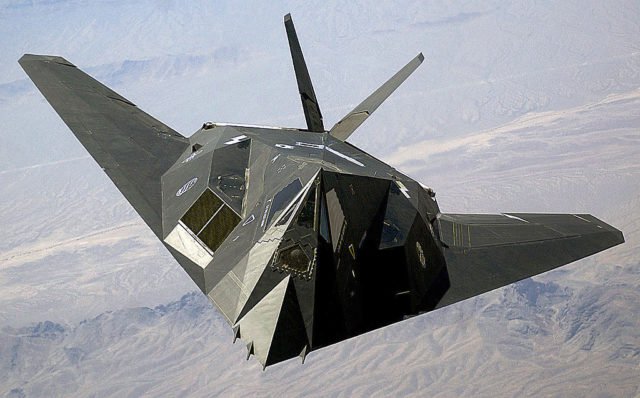
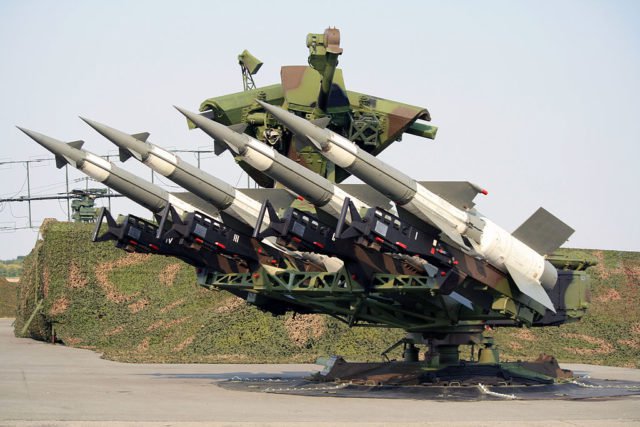

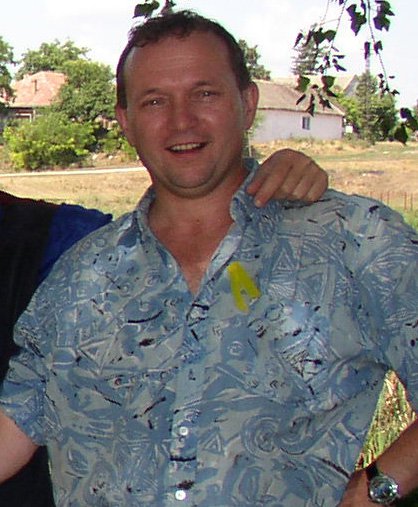
Photo Credit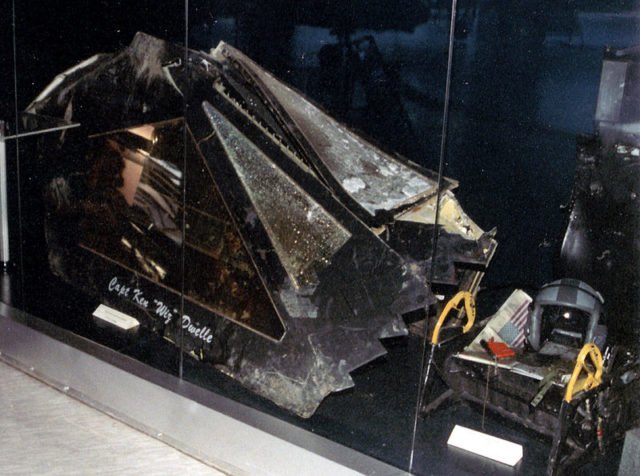
Photo Credit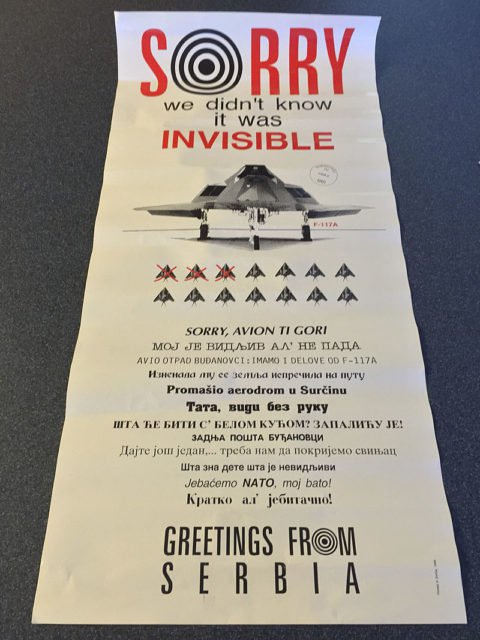
Photo Credit2019 Iran's Military Aggression Causes U.S. To Respond...
In the early morning of June 20, 2019 Iran shot down a United States unmanned aerial vehicle over the Strait of Hormuz, which runs between the Persian Gulf and the Gulf of Oman.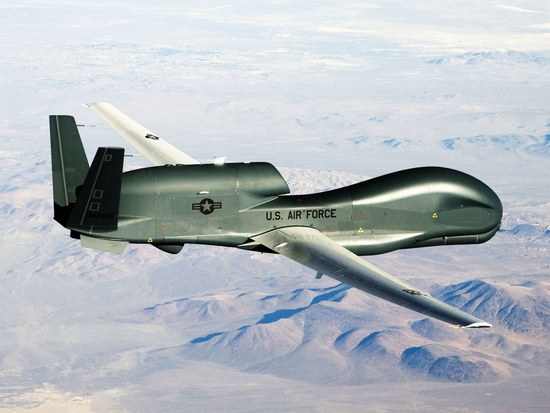
Global Hawks generally include infrared and thermal imaging, radar, and electro-optical imaging in their arsenal of sensors. And their massive size and weight capacity allows the drones to utilize equipment like huge telephoto camera lenses to get detailed views of targets. But as Ulrike Franke, a policy fellow at the European Council on Foreign Relations and a drone researcher, notes, the US military custom-outfits different vehicles for different missions, making it uncertain what exact equipment this particular Global Hawk carried. "There could always be super secret spy tech onboard that we don’t know about," says Franke.
It's likely, though, that this particular Global Hawk was a typical surveillance workhorse, says Franke, and was downed for geopolitical reasons rather than with the specific goal of technological reconnaissance. It's unclear if parts of the drone are even recoverable, or if it was destroyed in the attack. Iran memorably captured a US RQ-170 Sentinel drone in December 2011, and later claimed that it had reverse engineered the vehicle's hardware and software to copy its technology. Sentinel drones are thought to use stealth technology for inconspicuous aerial reconnaissance. Last year, Israeli officials said they had intercepted an Iranian drone that appeared to be a "copy" of a Sentinel.
As for whether the Global Hawk was flying over Iranian airspace, researchers say that definitive proof would require the US releasing details about the drone's flight path. "Whether they want to release that is more of a policy decision," Karako says. "But thus far CentCom is insistent that it was in international airspace."
It's currently unknown at what altitude the drone was flying when it was downed, but if it was in its high altitude zone it would have been a somewhat difficult target to nab. Still, Franke emphasizes that such an interception is within the bounds of Iran's known capabilities.
"Part of the selling point is Global Hawks fly so high and normally they should be secure from being shot down," Franke says. "It’s not incredibly difficult to shoot down a system like that, but it’s comparatively difficult. It shows resolve on the political side."
President Donald Trump initially tweeted on Thursday that, "Iran made a very big mistake!" In later comments, though, he seemed to take a less aggressive tone, saying, "I find it hard to believe it was intentional." Analysts say, though, that while it is not shocking that Iran possesses the intercept technology to shoot the drone down, it would have required a radar-guided, surface-to-air missile system—seemingly either an SA-6 or SA-7 SAM given to Iran by Russia. A more flexible heat-seeking, shoulder-fired missile system could not have hit a target at high altitude. In other words, you can't take down a Global Hawk unless you really, really mean to.
Comments
Airline Secrets Revealed
It doesn’t matter if being up in the air feels like a second home to you and you’re practically an honorary pilot at this point for how much you jet set — there’s a lot you probably never knew about your commercial flying experience.
1 You’re probably flying with dead bodies.
Airlines need to make money however they can, and that includes taking on additional cargo like corpses and body parts. Ever wonder how donated kidneys make it from St. Louis to Dallas, or a body is flown from one city to another? Now you do.
--->2 You should never, ever drink the coffee or tea.
Your commercial flight has only three possible ways of getting the water for that fresh brew: bottled (too expensive, you’ll need to fly private for that), bathroom tap (the same sink someone may have used to deal with air sickness after a bout of turbulence), or from a fresh tap water holding tank that’s positioned just a few inches from the human waste and trash tank on most commercial flights. You do the math, and consider a can of seltzer or bringing your own Starbucks on board.

--->3 Cabin lights get dimmed for a reason.
It’s not mood lighting, people. It’s for the sake of your eyes adjusting more easily to the outside world in the event of a crash upon landing. Less soothing than thinking your pilot just wants to create a spa-like environment, right?
While airplane designing minds decided long ago that storing floatation devices and vests under seat cushions would be a great way to maximize space and safety, they never accounted for the popularity of thieving passengers. It turns out those vests are one of the top stolen items on airplanes, and the crew hardly has time to notice. Make sure you check under your seat before taking off.
But the signal censors up front in the cockpit are pretty sensitive, so if your pilot is up front trying to get clearance for a takeoff and you plus 30 of your favorite seat mates can’t just enjoy airplane mode for a few minutes — you’re going to delay everyone. Don’t be that person. If you’re up in the air and your baby is hungry or cranky, it’s your right to feed. If the passenger next to you complains or causes a stir, the cabin crew is usually obligated to relocate them, not you.
If for some reason your seat changes last minute and you find yourself in the middle of a family of 14 young children, it’s likely because you did something to annoy the gate agent. Yes, they can punish you, so it's best not to be rude or demanding.
The airlines don’t talk about it much because they’re all in an effort to make their planes seem cheaper than anyone else’s, but tipping has been a long understood custom of better-heeled travelers. If your flight attendant treated you well, don’t be a stranger to the $5 bill in the handshake technique at the end of your flight. Or, if you’re looking for the best possible treatment, try bringing a fully sealed box of chocolates from duty-free on board to give to the attendant helping you the most. If you’re on a long flight from JFK to Marrakesh, your effort will certainly be worth it when you ask for your 16th cup of water and a third pillow.
Yes, remarks about your personality and how you treated them. So be nice — you’ll never make it to platinum elite as a sourpuss.
Not because he doesn’t love beef stroganoff at 35,000 feet above ground — but because most airlines don’t want to risk an entire plane full of passengers and their pilot getting food poisoning.
This 24-hour window before your flight takes off is literally your best shot at upgrading your seat or changing for a more desirable one. If you miss this window, even your gate agent might have a problem switching you.
When your pilot says “rough patch of air” or “turbulence” he or she usually means, “We’re flying through a horrible thunderstorm.” And yes, your plane is lightly being pelted with lightning. Don’t worry — that’s normal, but passengers tend to go nuts when they hear the truth so it’s usually not revealed.--->4 Your floatation device may be missing.
--->5 Your cell phone won’t make the plane crash.
--->6 Nobody can tell you not to breastfeed.
--->7 Bad passengers are seated in the kiddie section.
--->8 Tipping is actually a custom.
--->9 Your frequent flier account has a secret section where gate agents and phone representatives leave remarks.
--->10 Even if you’re in first class, your pilot probably isn’t eating the same meal as you.
--->11 You should always choose online check-in if it’s available to you.
--->12 Your pilot is humoring you.
--->13 The smoothest ride is right over the wing.
[Memorial Day ⚓️ 2019 Podcast!] Have you enjoyed an actual entertaining podcast today? No?! Change that! ⛴️ Tune in to our podcast where we discuss hot topics and entertaining news in the world.🚢



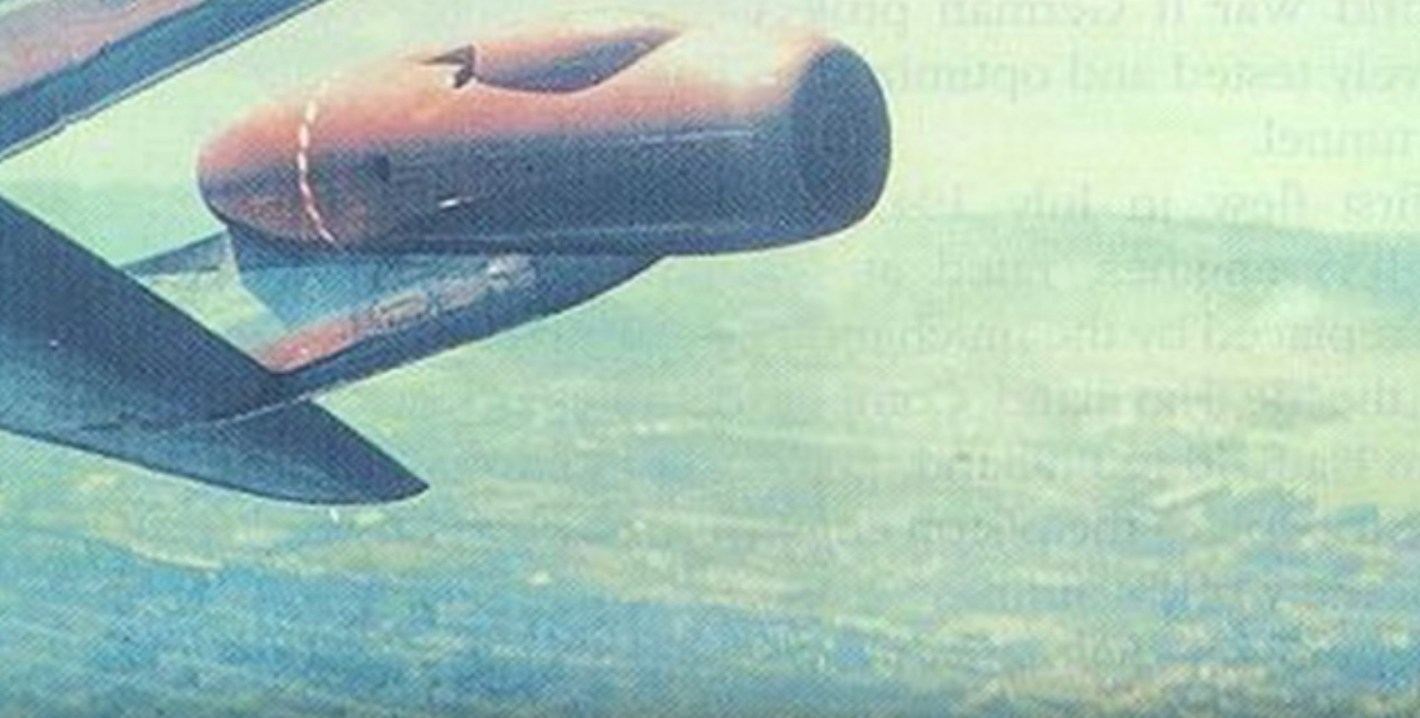


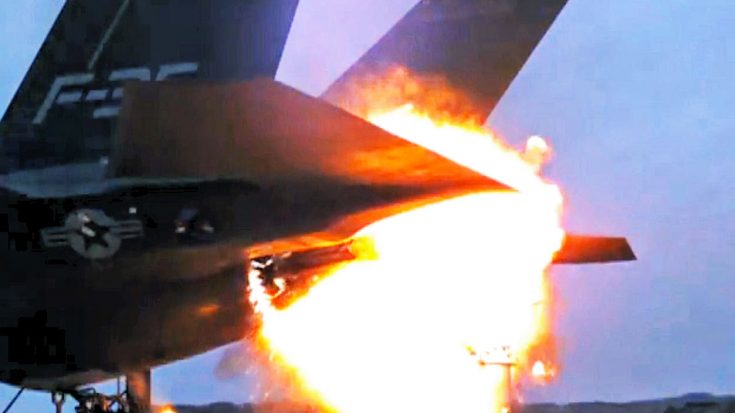
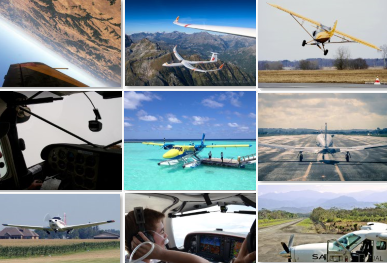
.jpg)



